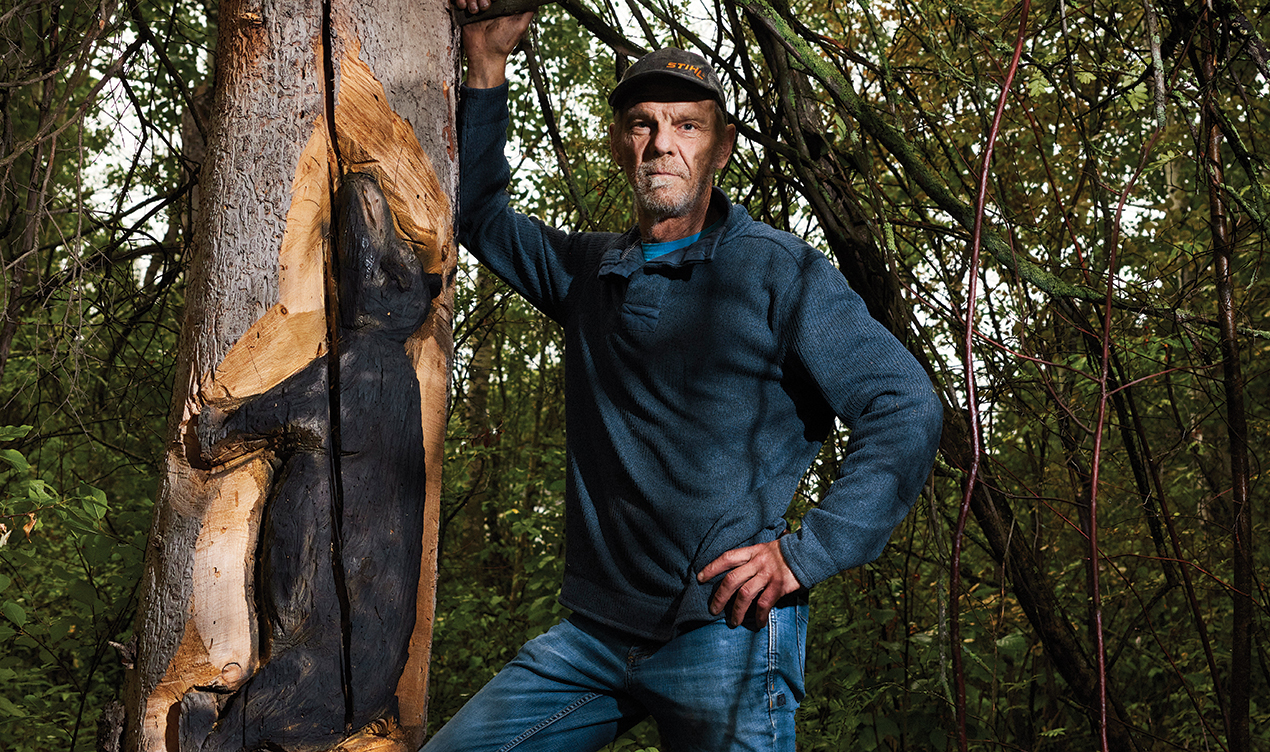Artist Tim Kurucz sends me a text saying he’s available for an interview at any point AS LONG AS THE OILERS AREN’T PLAYING. It’s written just like that with the last words all in caps.
LET’S GO OILERS, dings the next text. Granted, the same refrain rings across the city. At the time of writing, the Oilers are about to (almost) make one of the greatest hockey come backs in the history of the playoffs.
Within days, the City’s collective excitement is as palpable as Kurucz’s. He’s standing in his driveway in his blue and orange jersey and he reaches into his car for one of the many chainsaw carvings he’s created over the last several years. As he pulls it out of the vehicle, I recognize the shape of the Stanley Cup.
He shakes his head, lips pressed together, grimacing slightly.
“As I found out, after hours of searching the web — top to bottom, inside, outside, every orifice it has, you can’t find all the proper dimensions,” says Kurucz, his voice rising with frustration. “Sure, you can get the height, and some of it. But, I know where it’s not accurate, because I’ve looked at pictures of it a million times.”
Like many Canadians, Kurucz sees hockey as more than a game. It’s something that connects him to his late father, who saw Kurucz become the captain of his Canadian Athletic Club team, and win provincials. “It is one of few moments in those last few years that I saw true utter joy from my dad,” says Kurucz. “Then, he was dead by fall from cancer.”
Kurucz’s past and present are rooted in the neighbourhood of Westridge. The land across from the home in which he’s lived since junior high school was once a pig farm. “You know what direction the wind was always blowing,” says the 61-year-old artist with a smirk.
One day, the self-proclaimed “sports guy” — who had never done any kind of art — picked up a piece of cedar and carved it into a jackfish while staying at his friend’s cabin in Seba Beach.
Carving instantly became a big part of his life. He was all in — hook, line and sinker.
